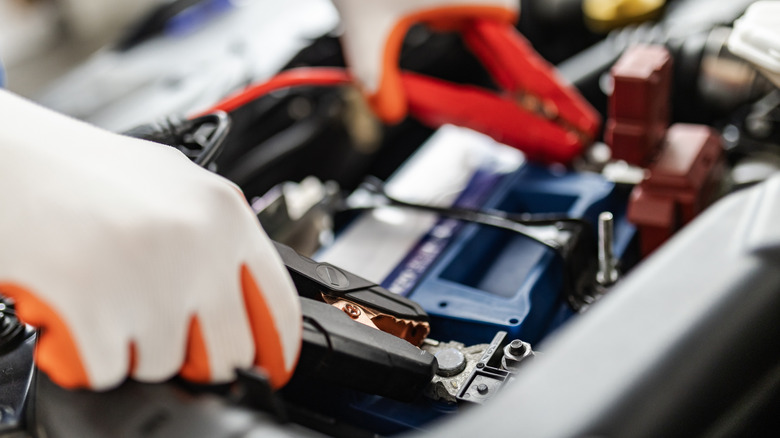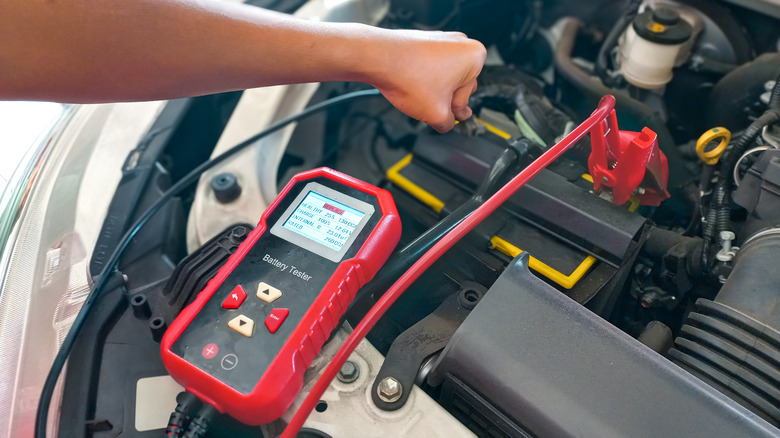How Long Should You Let Your Car Run After You've Jumped The Battery?
So you've successfully jump-started your car back to life; what's next? The last thing you want to do is immediately shut off the ignition and hope the engine roars back to life the next time you turn the key or push the button. Instead, you need to drive the car to restore the depleted battery. "Drive" is the operative word, because just letting the car run at idle won't generate enough current to juice the battery back up. But how long you need to drive isn't necessarily something that everyone agrees on. AutoZone, for example, suggests drivers hit the highway for 30 to 60 minutes to recharge a partially depleted battery, but more time behind the wheel might be required.
Interstate Batteries, on the other hand, suggests that it might take eight hours of highway driving to charge a depleted battery to nearly full. But since a car's alternator is not a battery charger, the only way to fully recharge a battery is with a dedicated battery charger. The AAA also points out that a dead battery may never fully recover to its original capacity. So, that half-hour zip on the highway may not be enough to prevent you from needing another jump-start, especially if the battery was already showing signs it needed replacing.
What to do after a jump-start
Driving to charge a battery after a jump start is only a partial measure. You'll want to use a battery charger to restore the battery's power as much as possible. Keep in mind that using one of these can take a day or more. Alternatively, most repair shops offer battery charging services if you prefer not to take the DIY approach.
The aftermath of jump-starting involves some detective work, as you'll want to determine what caused the battery to die in the first place. If the exterior or cabin lights were left on, then the answer is obvious. Beyond that, more sleuthing is required. The typical car battery lasts three to five years, so it's worth getting your battery tested if it's reached this point. Many auto shops offer this service for free. It's also worth inspecting the battery terminals and cables, making sure that the connections are tight and free of corrosion.
Another reason can be a bad alternator, which can cause the battery to drain due to insufficient charging. Alternator testing is another no-charge service offered at many car parts retailers; simple testing tools are also available in-store or online. If the battery keeps dying, you'll want to explore the reasons for this problem.

